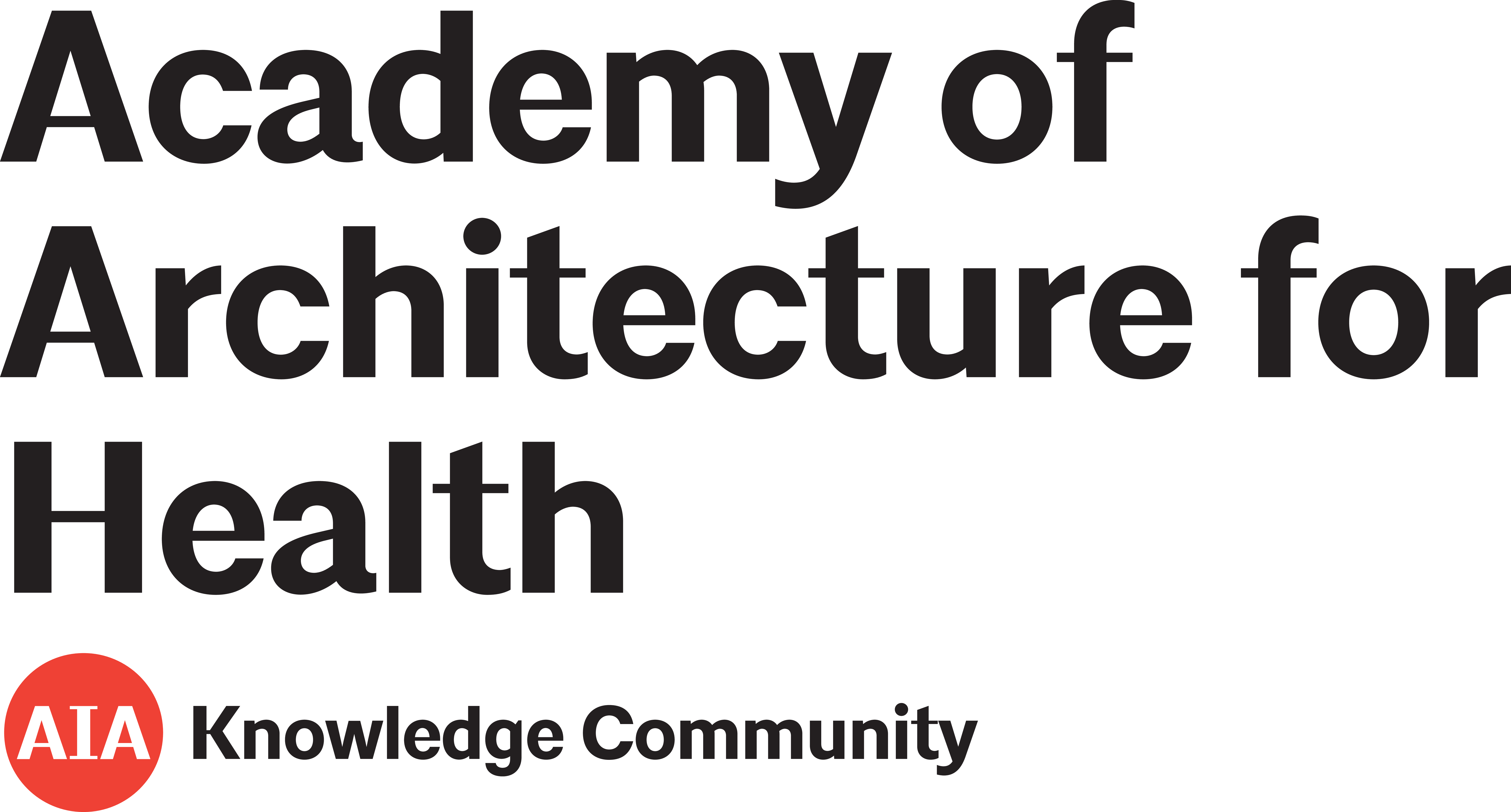Luminous environment in healthcare buildings for user satisfaction and comfort: an objective and subjective field study
2015
Indoor and Built Environment
Journal Article
Issue 5
Volume 25
Pages 809-825
Author(s): Lo Verso, V. R.M., Caffaro, F., Aghemo, C.
Lighting is important in healthcare, and the authors indicate its relevance to patient recovery and staff satisfaction. According to the authors, luminous environmental quality affects visual comfort, which is related to both natural and artificial lighting.
Added June 2015
Colour Sustainability in Hospitals Interior Spaces
2015
International Journal of Contemporary Architecture ”T he New ARCH“ V
Journal Article
Issue 1
Volume 2
Pages 30-36
Author(s): Elqahtani, L. A., Elgizawi, L.
The impact of the physical environment on health outcomes in hospital facilities has been studied extensively. Interior colors affect the moods and feelings of hospital users to a degree that must not be overlooked by facility designers.
Added June 2015
The Geriatric ED: Structure, Patient Care, and Considerations for the Emergency Department Geriatric Unit
2014
International Journal of Gerontology
Journal Article
Issue 2
Volume 8
Pages 56-59
Author(s): Burton, J. H., Young, J., Bernier, C. A.
Older patients who visit the emergency department in developed countries are more likely to require a more specialized nature of treatment in comparison to younger patients. The authors believe that current-day emergency departments are not equipped to adequately treat these patients in terms of design and staff training for assessments and evaluations unique to this age group. The authors recommend a geriatric-specific approach to designing patient treatment spaces, medical evaluations, neurocognitive assessments, and post-ED visit support.
Added June 2015
Analysis of Persian Gardens using Kaplan’s landscape preference theory (Case study: Fin garden, Shazdeh Mahan garden, Eram Garden & El Goli garden)
2015
International Journal of Architecture & Urban Planning
Journal Article
Issue 1
Volume 25
Pages 6-20
Author(s): Rezakolai, S. A., Samadi, D., Tabatabaian, M.
Added June 2015
‘Therapeutic landscapes’ and the importance of nostalgia, solastalgia, salvage and abandonment for psychiatric hospital design
2015
Health & Place
Journal Article
Author(s): Wood, V. J., Gesler, W., Curtis, S. E., Spencer, I. H., Close, H. J., Mason, J., Reilly, J. G.
There is a growing body of research exploring the concept of the “therapeutic landscape” or how the social, material, and symbolic characteristics of a given environment might positively affect one’s health. Studies show that many aspects of the physical environment can invoke positive or negative feelings, especially if there are features of the environment that are somehow related to one’s own memory.
Added June 2015
Applying lean principles to the design of healthcare facilities
2015
International Journal of Production Economics
Journal Article
Issue B
Volume 170
Pages 677-686
Author(s): Hicks, C., McGovern, T., Prior, G., Smith, I.
Hospitals are complex environments that require multiple stakeholder perspectives to successfully design, build, and operate. Planning the construction of a new healthcare facility involves considering how priorities and resources must adapt as needed while multiple workflows, materials, perspectives, and outcomes intersect on a daily basis.
Added June 2015
Comparative Analysis of Hospital Energy Use: Pacific Northwest and Scandinavia
2014
HERD: Health Environments Research & Design Journal
Journal Article
Issue 1
Volume 8
Pages 20-44
Author(s): Burpee, H., McDade, E.
Today, operational hospitals in the United States consume an enormous amount of energy. This study is an outgrowth of previous research evaluating high-quality, low-energy hos pitals that serve as examples for new high-performance hospital design, construction, and operation.
Added May 2015
Art Viewing Directives in Hospital Settings Effect on Mood
2015
HERD: Health Environments Research & Design Journal
Journal Article
Issue 3
Volume 8
Pages 30-43
Author(s): Ho, R. T. H., Potash, J. S., Fang, F., Rollins, J.
Added May 2015
The effect of changes in servicescape and service quality perceptions in a maternity unit
2011
International Journal of Health Care Quality Assurance
Journal Article
Issue 5
Volume 24
Pages 389-405
Author(s): Holder, M., Berndt, A.
Quality of service in healthcare is pertinent to patient experience and satisfaction, and can impact customer (patient) loyalty, cost savings, profits and market share of the healthcare facility. The authors indicate that the servicescape, or the physical environment of a facility, has an impact on a patient’s perception of the quality of service.
Added May 2015
Users' views of hospital environmental quality: Validation of the Perceived Hospital Environment Quality Indicators (PHEQIs)
2012
Journal of Environmental Psychology
Journal Article
Issue 2
Volume 32
Pages 97-111
Author(s): Andrade, C., Lima, M. L., Fornara, F., Bonaiuto, M
The hospital physical environment has been researched for years but its impact on patient outcomes is still in need of validation. The perception of the medical facility as a “healing environment” rather than a “curing machine” is being adopted by new hospitals. Improved physical environments generate overall satisfaction with medical services.
Added May 2015
Assessment of daylight in rooms with different architectural features
2015
Building Research & Information
Journal Article
Issue 2
Volume 43
Pages 222-237
Author(s): Cammarano, S., Pellegrino, A., Verso, V. R. M., Aghemo, C.
In an effort to reduce energy consumption and costs, many designers are focusing on producing buildings that make effective use of natural lighting. Numerous studies have shown how natural lighting holds a variety of potential benefits for building inhabitants; however, further research is needed to better understand how interior and exterior building designs can promote or hinder occupant exposure to natural lighting.
Added May 2015
Evidence-based design in an intensive care unit: End-user perceptions
2015
BMC Anesthesiology
Journal Article
Issue 1
Volume 15
Pages 57
Author(s): Ferri, M., Zygun, D. A., Harrison, A., Stelfox, H. T.
Authors consider evidence-based design (EBD) to be particularly relevant in the case of intensive care units (ICUs) given the high acuity of the patients and the multidisciplinary model of care. This qualitative study describes the experiences of end-users of an ICU designed using EBD principles in Calgary, Canada.
Added May 2015
A companionship between strangers – the hospital environment as a challenge in patient–patient interaction in oncology wards
2014
Journal of Advanced Nursing
Journal Article
Issue 2
Volume 70
Pages 395-404
Author(s): Larsen, L. S., Larsen, B. H., Birkelund, R.
The authors allude to existing literature indicating the healing and therapeutic effect of hospital environments and the increasing evidence between healthcare environments and patient outcomes. In this study the authors explore through observations and interviews of patients how the hospital environment impacts the interaction between hospitalized cancer patients.
Added May 2015
Fable Hospital 2.0: The Business Case for Building Better Health Care Facilities
2011
Hastings Center Report
Journal Article
Issue 1
Volume 41
Pages 13-23
Author(s): Sadler, B. L., Berry, L., Guenther, R., Hamilton, D. K., Hessler, F., Merritt, C., Parker, D.
The Fable Hospital, an imaginary facility with the best design innovations, was proposed in 2004, and the authors indicate that many healthcare systems have consequently adapted the principles in the building of their hospitals.
Added April 2015
Part 1: Evidence-Based Facility Design Using Transforming Care at the Bedside Principles
2015
Journal of Nursing Administration
Journal Article
Issue 2
Volume 45
Pages 74-83
Author(s): Devine, D. A., Wenger, B., Krugman, M., Zwink, J. E., Shiskowsky, K., Hagman, J., Limon, S., Sanders, C., Reeves, C.
A western academic hospital reexamined its design strategy when after three years of building a new facility they had to plan for a new facility to meet their patient capacity. Using a combination of the principles of Transforming Care at the Bedside (TCAB) and Evidence-Based Design (EBD), an interdisciplinary team presented design recommendations.
Added April 2015
Does privacy matter? Former patients discuss their perceptions of privacy in shared hospital rooms
2005
Nursing Ethics
Journal Article
Issue 2
Volume 12
Pages 156-166
Author(s): Malcolm, H. A.
According to the author, protection of patient privacy is a new legislation in New Zealand. The author indicates that anecdotal evidence suggests that the legislation was not well understood either by healthcare professionals or by patients.
Added March 2015
Salutogenic Effects of the Environment: Review of Health Protective Effects of Nature and Daylight
2014
Applied Psychology: Health and Well-Being
Journal Article
Issue 1
Volume 6
Pages 67-95
Author(s): Beute, F., de Kort, Y. A.W.
Added March 2015
Ambient light levels and critical care outcomes
2013
Journal of Critical Care
Journal Article
Issue 1
Volume 28
Pages 110.e1-110.e8
Author(s): Verceles, A. C., Liu, X., Terrin, M. L., Scharf, S. M., Shanholtz, C., Harris, A., Ayanleye, B, Parker, A., Netzer, G.
Several U.S. healthcare agencies endorse a guideline that requires the construction of windows in patient care rooms so that naturally regulated sunlight can contribute to interior ambient lighting. This recommendation has been adopted by agencies in 46 U.S. states. Few studies have analyzed the association between light levels and intensive care unit (ICU) outcomes. No previous studies have quantitatively measured light levels or assessed intermediate factors such as analgesic use.
Added March 2015
Impact of daylight illumination on reducing patient length of stay in hospital after coronary artery bypass graft surgery
2013
Lighting Research and Technology
Journal Article
Issue 4
Volume 45
Pages 435-449
Author(s): Joarder, A. R., Price, A. D. F.
Array
Added March 2015
Measurement of ventilation and airborne infection risk in large naturally ventilated hospital wards
2013
Building and Environment
Journal Article
Author(s): Gilkeson, C. A., Camargo-Valero, M. A., Pickin, L. E., Noakes, C. J.
In healthcare environments, the transmission of airborne pathogens is a matter of concern. Ventilation has been identified as one of the key factors in the risk of infection. The authors indicate that most of the evidence on ventilation and infection risk has been in controlled spaces like operating rooms and isolation rooms, and that naturally ventilated spaces like wards have not been studied. They conducted a series of experiments in an unused ward to measure the transmission of pathogens in conditions of natural ventilation, mechanical ventilation, and no ventilation.
Added March 2015




